People
Studio Visit: Textile Artist Sagarika Sundaram on Working in Silence and Seeking Out Felts From Around the Globe
The New York-based artist spoke to Artnet about her mammoth wooly works.
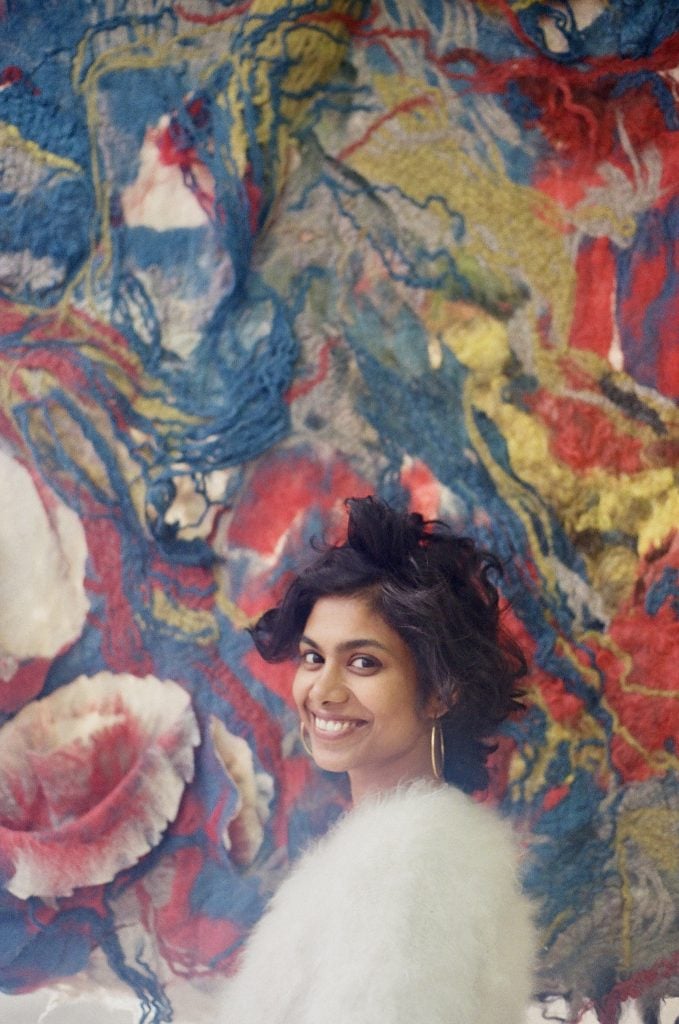
The New York-based artist spoke to Artnet about her mammoth wooly works.

Noor Brara

A first impulse when viewing textile artist Sagarika Sundaram’s works is to want to get close to them, to put your hands all over their varied textures comprised of natural fibers sourced from small farms and growers around the world, including India, Uruguay, and New Zealand. You want to envelop yourself in their thick, tactile fabrics; to disappear into a kind of cocoon.
Sundaram is used to inspiring such reactions. In fact, she says, she likes working on pieces that allow viewers a little quiet space, letting them experience the quality of silence you find when swathed in different kinds of materials.
The on-the-rise artist, who showed her works in a group show at Mana Contemporary last October, spent her early life bouncing back and forth between India and Dubai, during which time she’d gaze out the windows of planes, studying land formations in all their varying colors and shapes. Today, the images of those landscapes inspire her to create her own fabrics, which she produces by hand, on occasion working with a felt-making community in the lower Himalayas to gather regionally specific raw materials to fuse together textiles that suggest natural bodies like rivers, mountains, and valleys.
Recently, Sundaram, who was featured on PBS’s Rising Artists program last fall and was recently shortlisted for the UC Berkeley South Asia Art Prize, spoke to Artnet about her process, her studio dosas, the stack of books on her nightstand, and more.
What are the most indispensable items in your studio and why?
Wool, water, soap, and sunlight. I don’t need much more to make my work.
Is there a picture you can send of your work in progress?
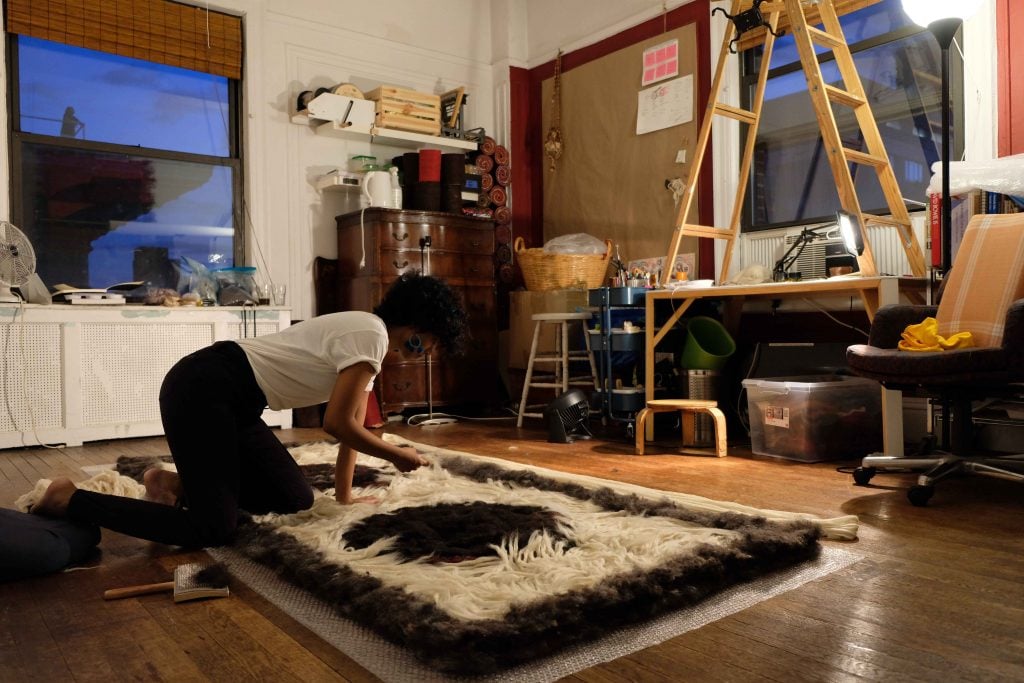
Sundaram at work. Photo courtesy the artist.
What is the studio task on your agenda tomorrow that you are most looking forward to?
I keep momentum up by making work that I’m excited to get out of bed and study. Right now, I’m preparing an antique toy loom from the 1930s to make small weavings using a modified ikat technique. I’m weaving with felted yarn that I made from scratch by rubbing wool fiber between my palms in hot soapy water. I’ve tied the yarn in bundles and again at points along the length. I’ll dye this in a blue-green gradient. Tied sections will resist being colored by the dye and stay white. I’m creating a cloth that resembles pebbles, or scales on a fish—we’ll find out in the morning.
What kind of atmosphere do you prefer when you work? Do you listen to music or podcasts, or do you prefer silence? Why?
Silence is important. I like to be alone to hear myself think.
Company is welcome when I work with my hands, so I turn to BBC Radio 6. I also love BBC’s Desert Island Discs. Quiet, thoughtful conversations with brilliant artists and their favorite music.
When I write, moody Indian and Western classical functions well. When I’m producing large pieces, intense music keeps me moving because the work is physically demanding. On one project I played Radiohead, Prodigy, Khruangbin, and Burna Boy on repeat. Everything changes if people are around me because then I feel pressure to explain my musical promiscuity.
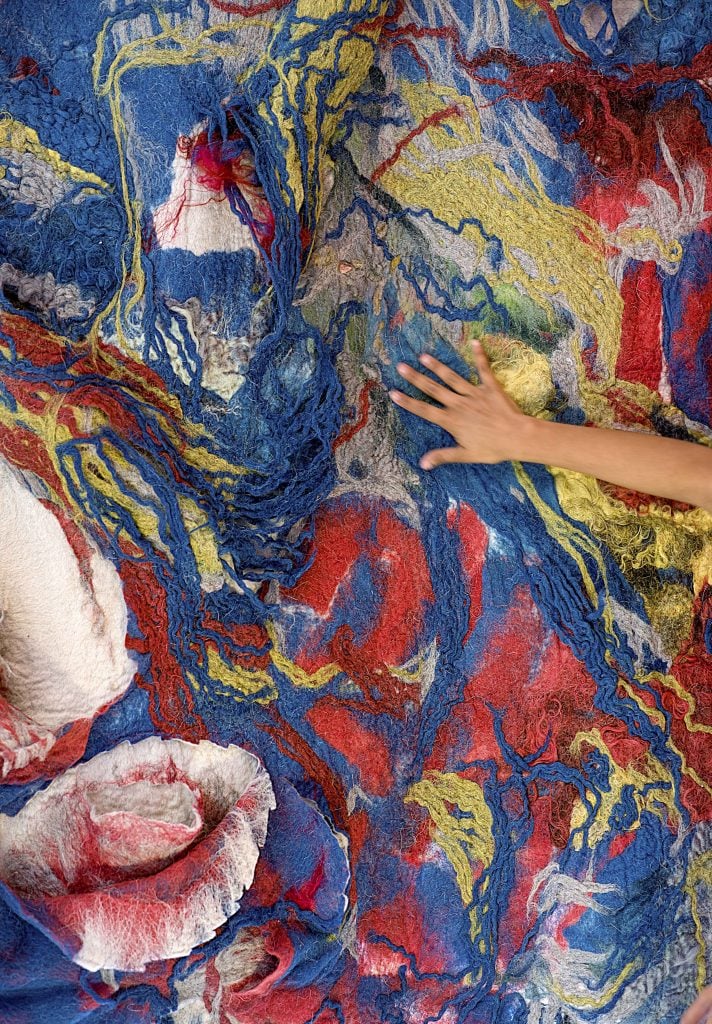
Photo courtesy Sagarika Sundaram.
What trait do you most admire in a work of art? What trait do you most despise?
The distinction between the adhesive and cohesive is one I think about a lot. I think you can tell when an idea feels glued together and you can pull it apart. I’m interested in ideas that feel integrated and clear. I admire work that feels truly imaginative, where I can sense the expanse of the artist’s mind, a world stretched open from one seed. Sonia Leimer’s Via San Gennaro comes to mind.
I often think about the afterlife of art. When does a work die and where does it go? “Despise” is too strong a word, but I sometimes find myself turning away from objects and installations made from what feels like excessive foam and plastic, even mined metal. It feels out of sync with the material consciousness our earth demands right now. I’m looking for art that reflects this sensitivity.
What snack food could your studio not function without?
The studio signature is dosa, a delicious South Indian rice and lentil crêpe, suitable at all times of day. Friends in Dubai have been sweetly sending care packages of Chips Oman, iykyk.
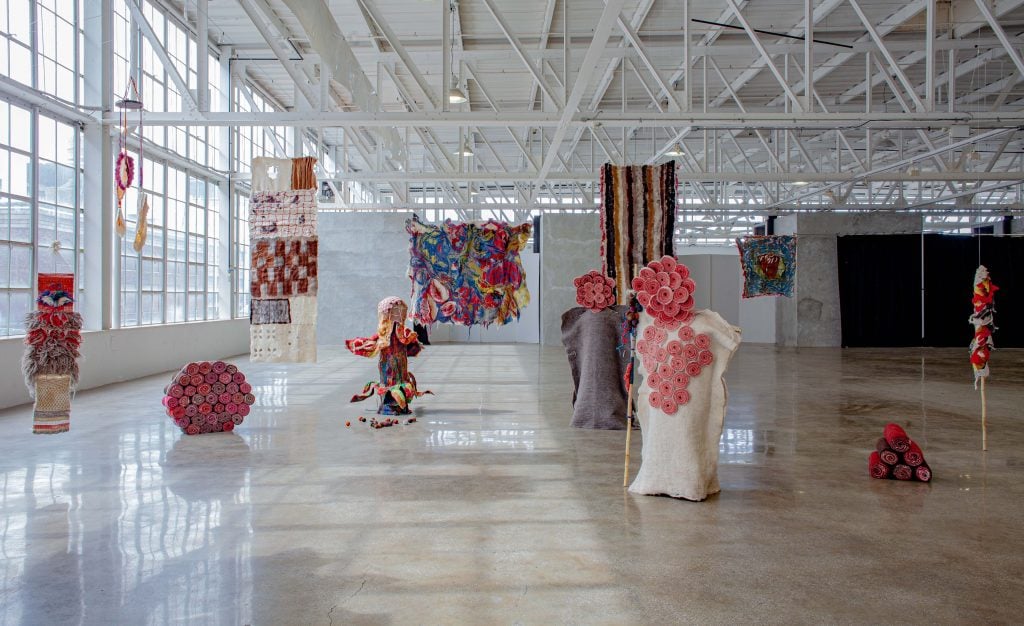
Installation view of Sundaram’s work in “Parsons MFA Textiles: Hybrid” at Mana Contemporary last fall. Photo courtesy Sagarika Sundaram.
Who are your favorite artists, curators, or other thinkers to follow on social media right now?
Cheryl Mukherji, an artist working with photography and video and ideas of origin and inheritance. Her writing is incredibly powerful and poetic. @cherylmukherji
Fannie Sosa for insight as co-creator of Black Power Naps and author of WIG, “A White Institution’s Guide for Welcoming Artists of Color and Their Audiences” @fanniesosalove
Shine Shivan for psychologically arresting sculpture, drawing, and performance @ShineShivan
Gautham Reddy, historian and South Asian Studies librarian at Emory University for surprising, poignant, and funny cultural connections through smartly curated Instastories from community archives @gaumure
The Anou Cooperative for rethinking the craft economy with innovative, systemic solutions driven by a vision beyond Fair Trade @the.anou
When you feel stuck in the studio, what do you do to get un-stuck?
I cook a meal to warm up my hands and organize my mind.
I can count on a film by Almodóvar or Ozon to rearrange me. Or a conversation with a good friend.
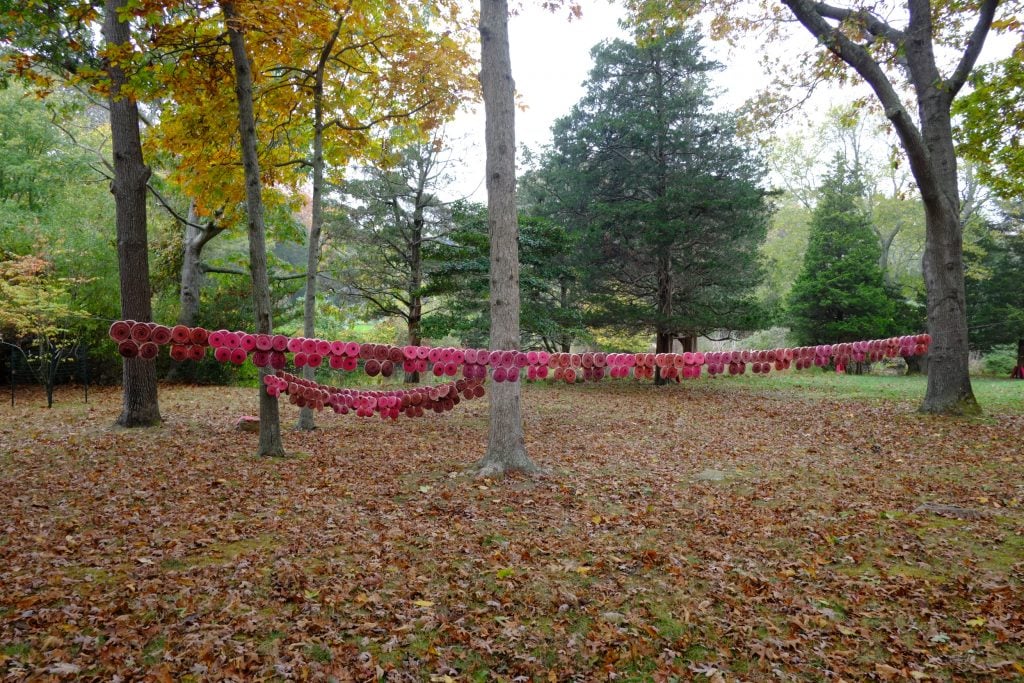
Photo courtesy Sagarika Sundaram.
What is the last exhibition you saw (virtual or otherwise) that made an impression on you?
SlaveCity by Joep van Lieshout at Museum De Pont in the Netherlands is imprinted on my memory. A city of 200,000 call center workers serviced with room, board, and a brothel instead of pay. Everything is recyclable, including the slaves themselves. He details an elaborate world through bendy bulging sculptures, drawings, maps, and models. It’s a brilliant satire on capitalism and sustainability.
I like that he comes so close to the macabre and profane, in a way that Mrinalini Mukherjee also did with her textile sculptures. I was moved by her posthumous retrospective at Met Breuer and wrote about it for New York Textile Month’s publication.
Post-pandemic, I’m more inclined to make and see art outdoors. It just feels better. I recently visited Jack Lenor Larsen’s Longhouse Reserve and loved a piece by Grace Knowlton, who like Larsen, recently passed away.
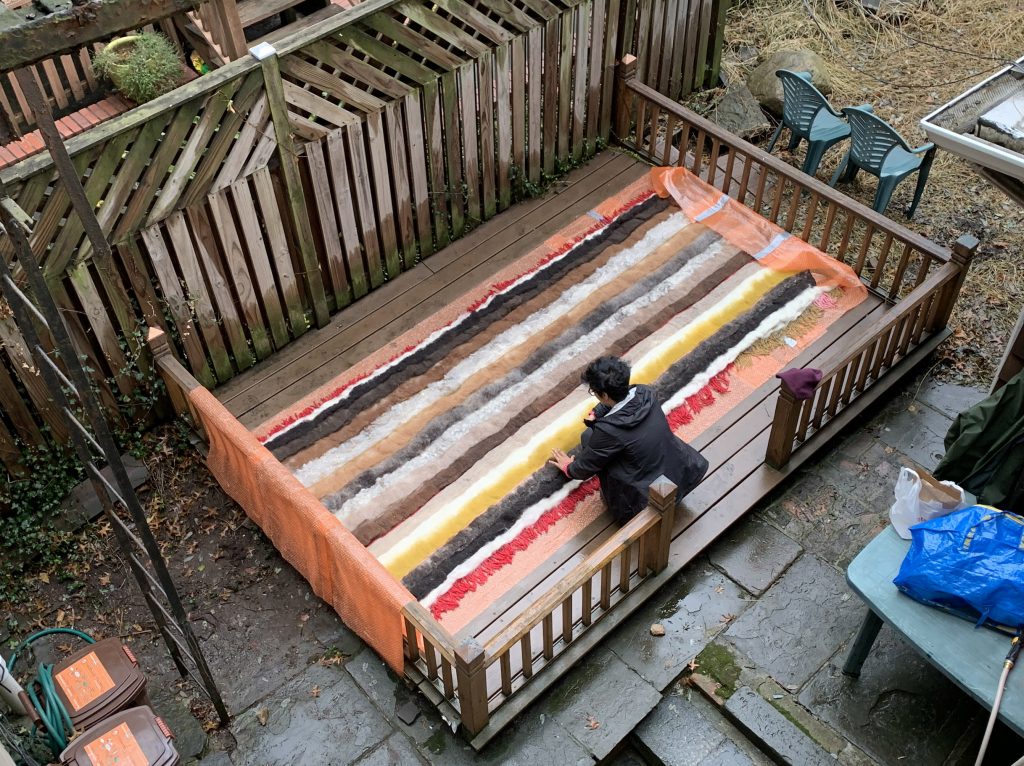
Photo courtesy Sundaram.
If you had to put together a mood board, what would be on it right now?
The books on my table could function as a mood board: